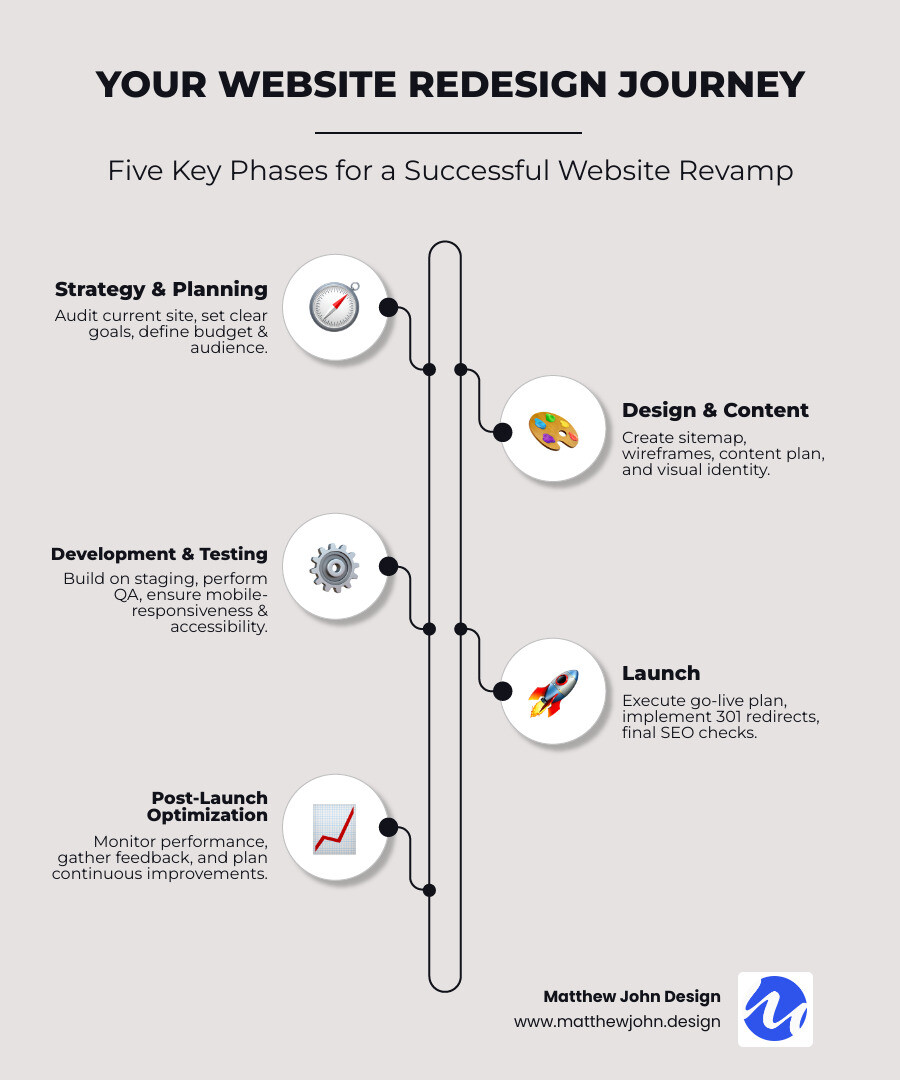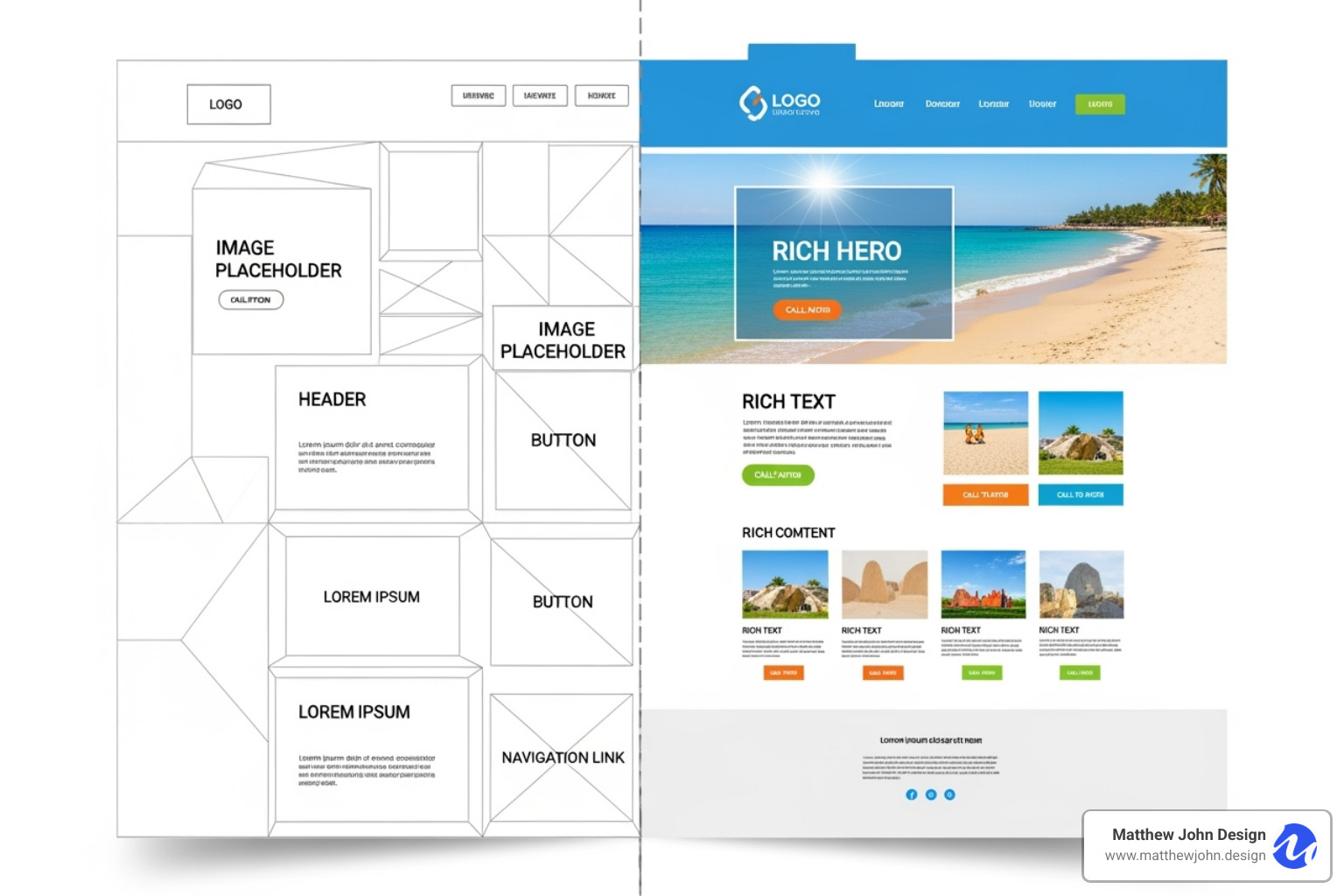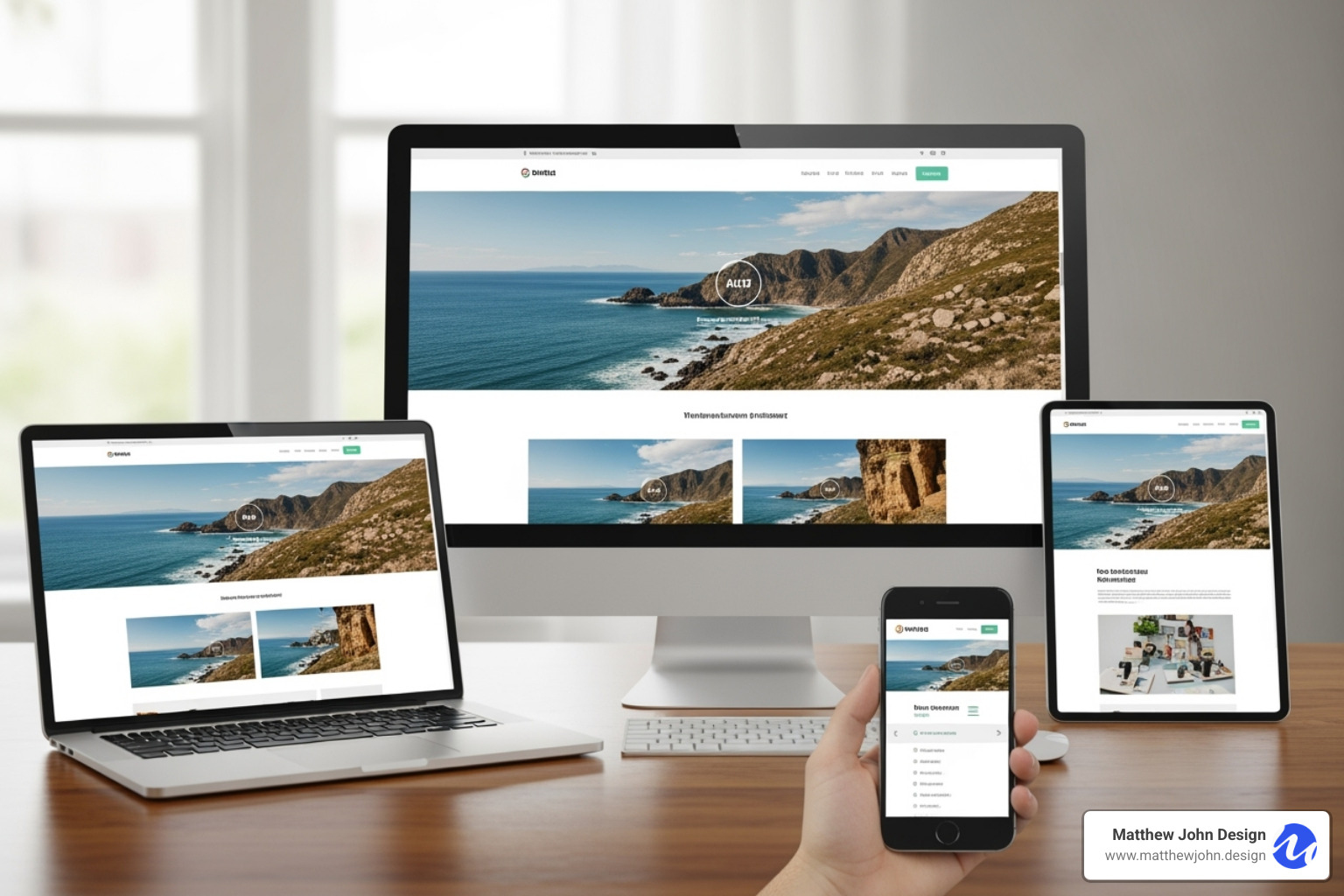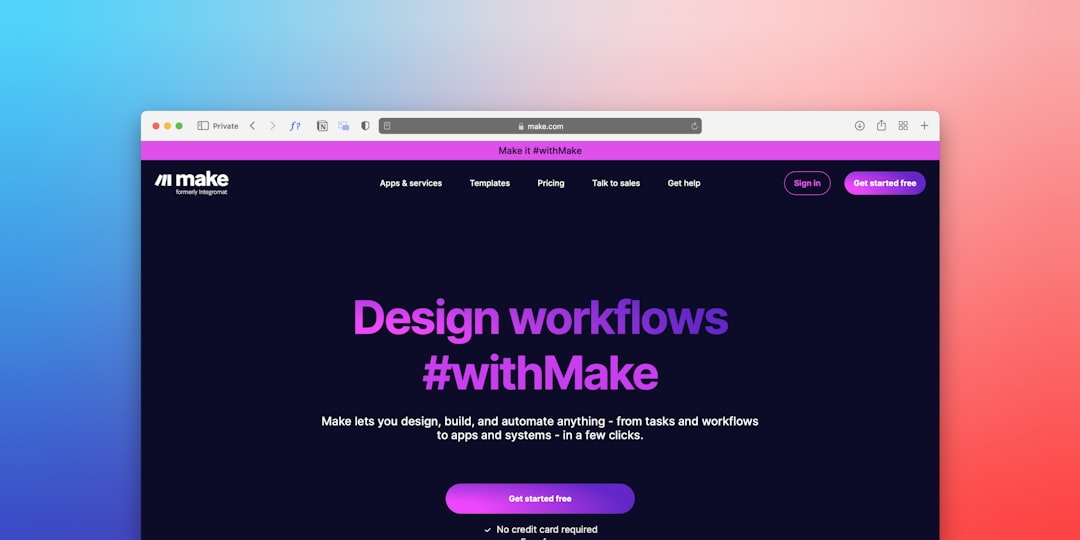Any information contained on this Website is not legal advice and should not be treated as such. You should always contact an attorney for help with your specific legal needs and issues. We may also earn a commission when you click links to our partners and purchase goods or services. For more information, read our Disclaimers Policy.
Why Your Website Needs a Strategic Redesign Approach
A site redesign checklist turns an underperforming website into a conversion powerhouse. Here's what every successful redesign needs:
Essential Site Redesign Checklist:
- Pre-Redesign Audit - Analyze current performance, SEO, and user behavior
- Goal Setting & Planning - Define clear objectives, budget, and timeline
- Design & Content Strategy - Create wireframes, content plan, and visual identity
- Development & Testing - Build on staging, test functionality, ensure mobile responsiveness
- Launch & Optimization - Execute go-live plan, monitor performance, gather feedback
Visitors form an opinion about your website in just 0.05 seconds. That split-second judgment can make or break your business.
Your website is your most powerful sales tool, not just a digital brochure. Yet, many sites lose effectiveness as technology and user expectations shift. Outdated designs, slow load times, and poor mobile experiences cost you visitors and conversions daily.
Research shows 94% of first impressions are design-related, and 38% of visitors will leave if a site is unattractive. However, a well-executed redesign can increase conversion rates by up to 200%.
This guide walks you through each phase of the redesign process, helping you avoid costly mistakes and maximize your investment. Whether it's your first major redesign or an optimization effort, this checklist ensures nothing is missed.

Phase 1: Pre-Redesign Strategy & Planning
Before diving into aesthetics, we must establish a solid strategy. This phase is the blueprint for your redesign, defining the "why" behind the project. We ensure every decision aligns with your business goals to drive real results. Since the average website needs a redesign every 1-2 years, making this one count is crucial.
Audit Your Current Website & Define KPIs
A thorough website audit is like a complete physical for your site, identifying what's working and what isn't. An audit examines design, usability, SEO, and loading speeds. Crucially, we establish baseline Key Performance Indicators (KPIs) to measure the redesign's impact.
This health check includes:
Performance is critical. We use tools like Google's PageSpeed Insights to find what's slowing you down. With 88.5% of mobile users abandoning slow-loading sites, speed is directly tied to revenue.
An SEO audit uncovers technical issues like broken links, missing meta tags, and crawl errors that hurt your search rankings and traffic.
A content audit identifies which pages drive traffic, which are stale, and which need a refresh or a complete rewrite.
User behavior analysis using tools like Hotjar provides heatmaps and session recordings to show where users click, scroll, and get frustrated. This helps us spot high bounce rates and low conversion points.
This audit provides a clear performance picture, identifying key improvement opportunities and ensuring we solve real user problems.
Set Clear Goals, Budget, and Timeline
With a clear baseline, we can now define what success looks like for your redesign. We set SMART goals (Specific, Measurable, Achievable, Relevant, Time-bound). Instead of vague aims, we target concrete objectives like "increase leads by 25% in six months" or **"reduce bounce rates by 10%."
Budget transparency is key. While a DIY redesign can cost $100 to $3,000, a professional agency partnership typically ranges from $15,000 to $30,000 or more. This investment covers strategy, design, development, and testing, focusing on measurable business results and ROI, not just aesthetics.
A structured timeline prevents scope creep. A typical redesign includes: research (1-4 weeks), design (4-8 weeks), development (4-10 weeks), testing (2-4 weeks), and launch prep (1 week). As detailed in our guide on Optimizing Webflow Sites for Higher Conversions: A Comprehensive Guide to CRO, clear timelines are vital for maintaining focus on conversion optimization.
Understand Your Audience
Many redesigns fail because they're built on assumptions, not user insights. We must ask: who are we designing for? Understanding your audience means going beyond demographics to uncover their pain points, goals, and online behaviors.
We develop detailed buyer personas and map their user journeys, tracking every touchpoint from first interaction to conversion. This process involves customer interviews, surveys, market trend analysis, and competitive research to identify differentiation opportunities.
The payoff is intentional design. Every element aligns with user behavior, a core principle of the strategies in our CRO Strategies for SaaS Companies Using Webflow guide. A site redesign checklist that skips audience research is like designing blindfolded; why leave success to chance?
Phase 2: Design, Content, and SEO Foundation
With a solid strategy, we move to the creative and structural heart of the redesign. Here, we transform insights into tangible plans for your site's look, feel, and architecture. Since a great user interface (UI) can lead to a 200% increase in conversion rates, we focus on both aesthetics and functionality.

Create Your Sitemap and Wireframes
This step is the blueprint for your site, defining its structure before we focus on design. We begin with information architecture, creating a clear site map that outlines every page and its relationship to others. This ensures logical navigation for both users and search engines.
Next, we create wireframes, starting with low-fidelity sketches focused on layout and evolving into detailed, high-fidelity mockups. Interactive prototypes simulate the user experience, allowing us to test navigation and interactions before development begins. Our expertise in building excellent Webflow websites allows us to create functional and compelling prototypes. Learn more in our Blog Category: Figma.
Develop a Content & Visual Strategy
This is where we bring your brand to life with words and visuals that connect with your audience. A content audit sorts existing content into three categories: keep, update, or delete. This strategic curation ensures every piece of content on the new site is valuable.
A content migration plan prevents data loss during the transition. We also identify content gaps and create new pieces that resonate with your target audience.
We then define your visual identity, including a recognizable color scheme, readable typography, and high-quality imagery. Every element works to tell your brand story. Our SEO Writing and Video Services can help craft compelling narratives for users and search engines.
Plan for SEO to Protect Your Rankings
A beautiful site is useless if no one can find it. SEO planning during a redesign is critical to avoid common pitfalls that hurt rankings.
We start with keyword mapping, researching terms your customers use and strategically assigning them to pages on the new site. A clean, descriptive URL structure helps both users and search engines understand your page content.
A common mistake is failing to implement proper 301 redirects for changed URLs. Redirects preserve your hard-earned SEO equity or link equity and prevent users from seeing 404 error pages.
We optimize on-page SEO elements like meta titles, descriptions, and headers with target keywords. A strong internal linking strategy helps search engines understand content hierarchy and guides users. Integrating SEO into every decision primes your new site for success. For more, see our Webflow SEO Settings Best Practices and our Blog Category: SEO.
Your Complete Site Redesign Checklist for Development & Testing
In this phase, design blueprints become a reality. We rigorously test every aspect to ensure flawless performance across all devices. Since mobile accounting for approximately half of web traffic worldwide, responsiveness is non-negotiable.

Build on a Staging Environment
A staging environment is a private dress rehearsal for your website. We build and test here before launch without affecting your live site. During CMS implementation, we integrate your chosen platform, often Webflow for its flexibility. We specialize in scalable Webflow sites with reusable components and smart CMS structures, empowering your marketing team to manage content without developer delays.
Front-end development brings designs to life with clean code, while back-end development handles the technical foundation. We also connect your new site to third-party integrations like your CRM or email platform. Learn more in our Webflow Website Management guide and our Blog Category: Webflow.
A Crucial Part of Your Site Redesign Checklist: QA Testing
Quality Assurance (QA) testing ensures everything works perfectly for every user, every time. Functional testing involves checking every button, form, and user path. We use tools like Screaming Frog for link checking to find and fix broken links.
Cross-browser compatibility testing ensures your site looks and functions correctly on all major browsers and operating systems. Performance testing focuses on speed. We analyze Core Web Vitals (LCP, INP, CLS) to ensure pages load in under three seconds, as slower speeds lead to visitor abandonment. This is why we offer dedicated Quality Assurance Services; catching problems before launch is always easier than fixing them later.
Ensure Mobile-Responsiveness and Accessibility
A modern site redesign checklist must prioritize mobile users from day one. We use a mobile-first design approach, creating flexible layouts that look great on any screen size.
Accessibility testing ensures your site is usable by everyone, which is not only inclusive but also helps avoid legal issues. In 2020, more than 2,500 accessibility lawsuits were filed in federal court.
We test for keyboard navigation and screen reader compatibility. We also use tools like the WebAIM Contrast Checker for color contrast checks and ensure all images have descriptive alt text. Following W3C's Four Principles of Accessibility ensures your site is perceivable, operable, understandable, and robust for all.
Phase 4: Launch & Post-Launch Improvement
After careful planning, design, and testing, it's time to launch. But going live isn't the end; it's the beginning. Like a garden, your website needs continuous nurturing. Post-launch monitoring and optimization are key to attracting visitors and turning them into customers.
Execute the Pre-Launch and Launch Plan
A smooth launch requires a detailed plan. First, we perform a complete backup of the old and new sites. We then double-check all 301 redirects to protect your SEO value and prevent "page not found" errors.
A final SEO check confirms meta titles and descriptions are correct. We also run a security scan, check the SSL certificate, and update DNS records to point to the new site. This is typically done during low-traffic hours to minimize potential downtime. After these checks, we launch.
Monitor Performance and Measure Success
Post-launch, we become data detectives, monitoring performance against the goals set in Phase 1. We track Key Performance Indicators (KPIs) like traffic, engagement, and conversion rates against our initial benchmarks. Using Google Analytics, we review visitor sources and on-site behavior to identify improvement areas.
Google Search Console helps us find crawl errors and indexing issues. We monitor keyword rankings and gather user feedback through surveys. Tools like heatmaps and session recordings show how users interact with the new design. This data-driven approach allows for continuous optimization, a core concept explained in our article What is Conversion Rate Optimization in Digital Marketing?.
Plan for Continuous Improvement
A website is never "done." Continuous improvement is the secret to staying competitive and maximizing your ROI. Keeping content fresh is vital for users and SEO. Our SEO Writing and Video Services can help. We also A/B test elements like headlines and CTAs to find what best resonates with your audience.
Ongoing performance tuning includes monitoring speed and Core Web Vitals. Regular security updates are non-negotiable. We manage plugins and integrations, making iterative improvements based on data from analytics, user feedback, and A/B tests. For ongoing support, consider our Website Support Subscription.
Frequently Asked Questions about Website Redesigns
A website redesign is a big step that brings up many questions. Let's clear up the most common queries to help you feel confident.
What's the difference between a website redesign and a refresh?
A website redesign is a complete overhaul of your site's foundation, structure, code, and visuals. It involves restructuring the sitemap, reimagining the user experience, and adding new functionality. A redesign is a strategic investment to fix deep-rooted issues, align with new business goals, or evolve your brand.
A website refresh, on the other hand, is a cosmetic update. It focuses on minor changes like updating content, imagery, colors, or fonts without altering the core architecture. A refresh keeps your site looking current and addresses minor issues without a full rebuild.
How much does a website redesign cost and how long does it take?
The cost and timeline vary. A DIY project might cost a few hundred to a few thousand dollars. A professional, agency-led redesign typically costs $15,000 to $30,000+, depending on complexity, page count, and custom features. It's an investment in a powerful business tool.
A comprehensive redesign timeline is typically 2 to 6 months. This covers all phases from planning and design to development, testing, and launch. More complex sites can take longer.
How should I handle video on my new website?
For optimal performance, it's best to host videos on third-party platforms like YouTube, Vimeo, or Vidzflow and embed them on your site. While a platform like Webflow is excellent for many things, its native video hosting is intended for short, looping background videos (under 30 MB), not for streaming marketing or informational content. Using a dedicated service ensures fast load times and a smooth playback experience for your visitors.
How is AI impacting the website redesign process?
Artificial Intelligence (AI) is making the redesign process more efficient and personal. AI-driven prototyping tools speed up the design phase by suggesting data-backed layouts. Personalization engines adapt the website experience in real-time for each visitor based on their behavior and demographics, boosting engagement.
AI also assists with content creation and optimization, generating ideas and suggesting SEO improvements. Predictive analytics can forecast how design changes might affect user behavior and business goals, allowing for smarter, data-driven decisions.
Finally, AI automates web development by handling repetitive coding tasks and identifying bugs, leading to faster development and higher-quality code. While AI doesn't replace human creativity, it's a valuable tool for building smarter, user-centric websites.
Conclusion: Revamp Your Website with Confidence
A successful website redesign is a strategic change that boosts performance, engagement, and your bottom line. It's about creating an experience that connects with visitors and turns them into customers.
This comprehensive site redesign checklist ensures no critical steps are missed. Every phase, from the initial audit to the final launch, builds toward creating a website that works for your business.
A well-executed redesign aligns your digital presence with evolving business goals. Whether you've expanded services or shifted audiences, the process leverages new technologies to create a user experience that converts. A structured redesign process leads to dramatic improvements in conversions, engagement, and search rankings. The result is a website that represents your brand and simplifies your team's workflow.
At Matthew John Design, we build scalable, high-performing Webflow websites with reusable components and CMS structures. This empowers your marketing team to manage the site and launch campaigns without developer delays. Your website should grow with your business. Empowering your marketing team to update content and test campaigns without technical roadblocks leads to peak performance and efficient management.
Ready to transform your website into a powerful business tool? We can guide you from initial strategy to post-launch optimization.


